How Fast Does Mold Grow After A Flood?

Mold growth from flooding and water leaks has always been a nightmare for a homeowner. Not only is it difficult to remove, but it can also be costly for both finances and health issues. A water leak can happen in the home at any time of the year but is especially problematic after huge weather events like the winter storm of February 2021 in the southern US. Many people may be concerned right now about water damage and potential mold growth, mold spores, and how to prevent it in the home. Also, many people may not understand the importance of proper mold removal and the use of companies that fix water damage.
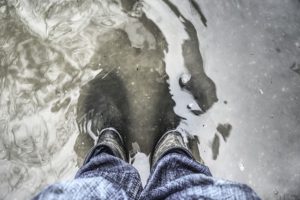 How Long Does It Take Mold To Grow In A Flooded Home?
How Long Does It Take Mold To Grow In A Flooded Home?
Unfortunately, after water damage or a water incident, it doesn’t take long for mold to grow in the home. If conditions are right, mold begins to grow aggressively within 24 to 48 hours (1). In the aftermath of a disaster or serious storm, cleanup and remediation within 48 hours might seem rushed but this is the critical period to stop mold from growing and damaging your home and personal property.
Unfortunately, after water damage or a water incident, it doesn’t take long for mold to grow in the home. If conditions are right, mold begins to grow aggressively within 24 to 48 hours Share on XWhat conditions need to exist?
Mold likes to eat fibrous material often found in home construction materials. Mold eats things like cardboard, paper, particleboard, bacteria, dust particles, and even furniture. However, it also requires moisture often from water leaks or water damage from natural disasters or a burst pipe. Anywhere there’s lots of humidity and moisture without airflow to dry it out you will see mold grow (1,2,3).
How soon after water damage do mold spores begin to grow?
Mold reproduces through the development and release of spores. As soon as it begins to grow, it also begins to reproduce fairly quickly. These spores are like tiny seeds that float in the air and settle on a surface. Wherever they settle, mold will grow in a new place. It’s very difficult to see spores with the naked eye and they do not become visible until they colonize and start to grow which is why it’s difficult to detect them early on. However, since mold is very opportunistic, most species will find a way to grow if the conditions are right (1-3).
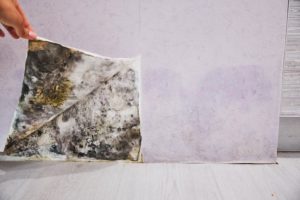 Does Water Damage Always Cause Mold Growth?
Does Water Damage Always Cause Mold Growth?
Mold requires food, space, and moisture in order to grow. If one of these things is missing, mold will have a harder time growing and reproducing (1-3). Although mold doesn’t always grow after moisture damage, it’s highly likely since many homes lack proper airflow, especially within walls. This is why home prevention and mold remediation strategies focus on these areas. A mold problem is only as bad as the conditions are ripe (4). Water damage restoration and removal of damaged materials are very important, but prevention is also needed.
Mold requires food, space, and moisture in order to grow. If one of these things is missing, mold will have a harder time growing and reproducing (1-3). Although mold doesn’t always grow after moisture damage, it’s highly likely since… Share on XDoes water damage always cause dangerous black mold growth?
Black mold, or Stachybotrys, is one species of mold, but it is one of the most dangerous for the wellbeing of all living beings in the house. If this species is detected, it requires very skilled mold remediation and removal (1,5). Black mold can cause serious allergies, lung problems, immune issues, and exacerbation of pre-existing illnesses (5,6,7). Although black mold is dangerous, other species like aspergillus can also cause serious health problems (5). Although Stachybotrys is a risk, it doesn’t always grow with every incident of water damage.
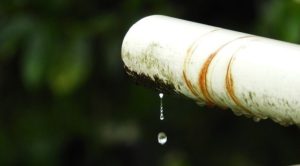 Can Mold Grow After A Leak Is Fixed?
Can Mold Grow After A Leak Is Fixed?
Unfortunately, mold can still grow after a leak or flood damage has been fixed. Often this happens because the problem wasn’t fixed properly the first time. Occasionally, moisture is left behind or becomes hidden under floorboards or inside wall cavities. If this is the case, then spores can easily be deposited and cause a new colony of growth (1,2).
How to prevent mold after water damage?
The ideal is to prevent mold growth in the first place, but this may not always be feasible. Disasters like the recent ice and snowstorm in the southern US can happen, which greatly increases the amount of water damage and leaks in the house. Once moisture damage has taken place, it’s recommended to have a restoration company provide proper water damage restoration (1,3,6). Although many people believe they can do this on their own, it’s very easy to think the mess is cleaned up when it’s not. And without a proper restoration process, mold can begin to grow in a very short amount of time (1,7).
How to prevent further problems?
First, stop the moisture source! In the case of a pipe leak, shut off the main valve to cut off the water pressure.
Be sure that there’s sufficient airflow throughout the home to help the space dry out. Temperatures permitting, open up windows, or use fans, dehumidifiers, or air purifiers (1). The important thing is to move air through the home to dry out household objects, wall cavities, ceiling, floors, and furniture, and lower ambient humidity. This is especially crucial if there was any serious flooding. Be sure to remove and thoroughly dry any objects that were soaked. Personal property, drywall, or flooring may all need to be replaced if seriously damaged. Lastly, it’s highly recommended to work with a water damage restoration company that has mold removal experience to help repair any major problems after a water leak or flood (1,2,3).
Conclusion
Mold growth after water damage, leaks, and flooding is a serious problem that needs repair and remediation. This is especially important to consider after weather disasters and other climate issues. Mold growth can definitely cause health issues which can be deadly for specific people with compromised immune systems or existing health problems. The best way to deal with this problem is to prevent it in the first place, but once the water has leaked into the home, it’s important to find professional help in order to fix the problem and prevent mold before it takes hold.
The best way to deal with this problem is to prevent it in the first place, but once the water has leaked into the home, it’s important to find professional help in order to fix the problem and prevent mold before it takes hold. Share on XLastly, fungus can’t grow in dry places void of food that has a good balance of other microbes to provide natural competition. This is why it’s not good to over-clean a home with antiseptic products. Instead, allow for a good balance of household, human, and soil-based microbes. Be sure to have good ventilation, remove clutter around places where water tends to leak, and consider investing in fans, dehumidifiers, and an air purifier.
References
https://www.sciencedirect.com/topics/engineering/mould-growth
https://www.cdc.gov/mold/faqs.htm
https://royalsocietypublishing.org/doi/full/10.1098/rspb.2015.1139
https://www.ncbi.nlm.nih.gov/pmc/articles/PMC1892134/
https://www.sciencedirect.com/science/article/abs/pii/S0013935115000304
https://www.sciencedirect.com/science/article/abs/pii/S1471490615000022


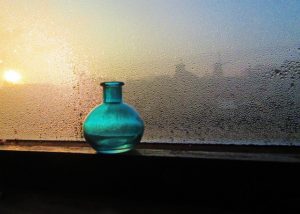 CONDENSATION CAUSES MOLD
CONDENSATION CAUSES MOLD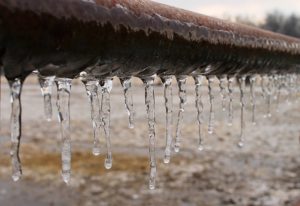 FLOODING CAUSES MOLD
FLOODING CAUSES MOLD